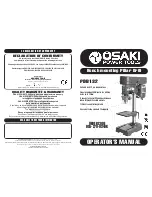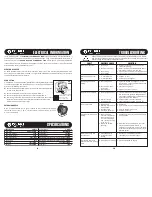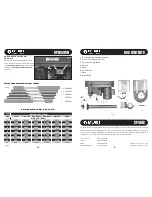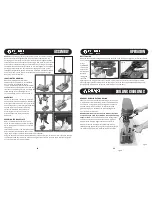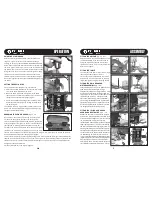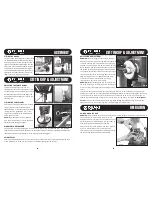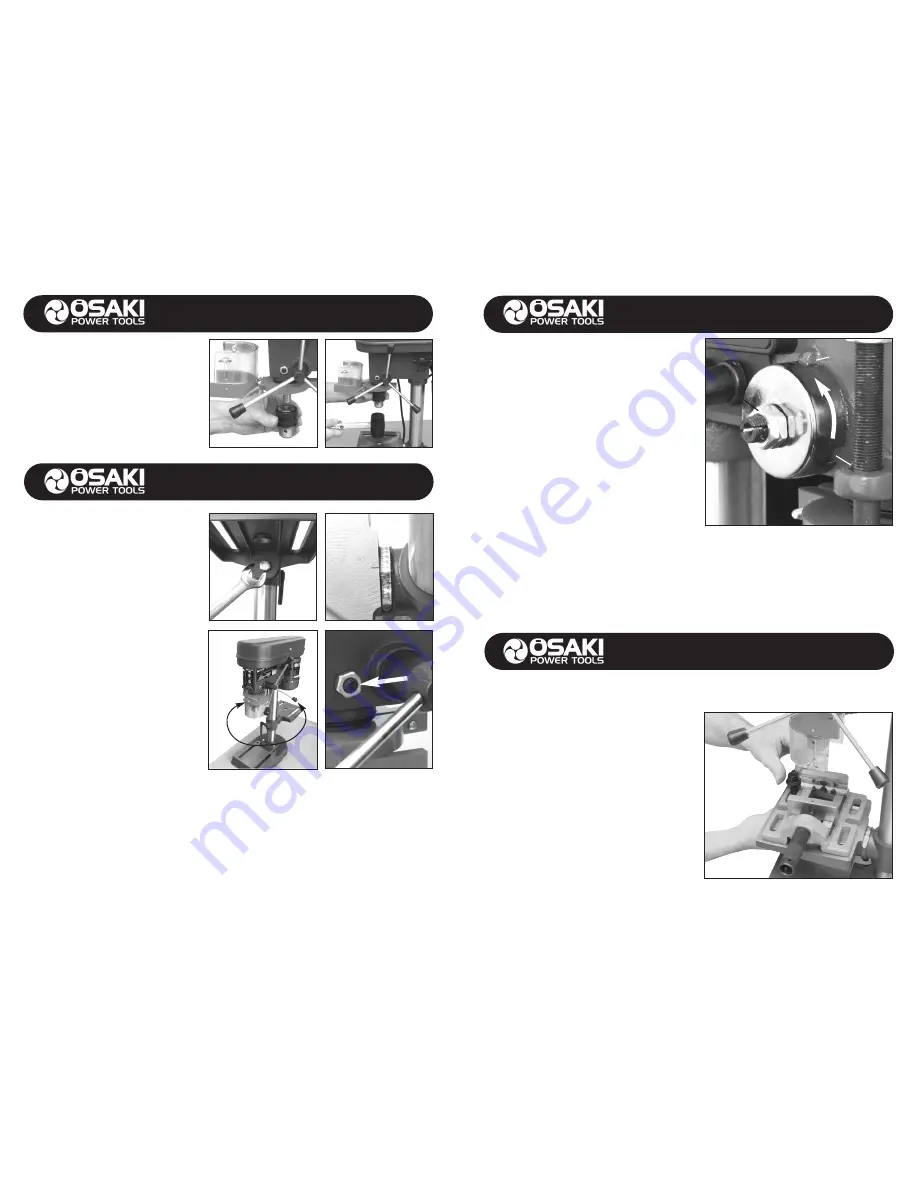
9
8
FITTING THE CHUCK
The chuck has a taper fitting, simply place it onto
the spindle adaptor and tap with a soft rubber
mallet (Fig.19 & 20). This is enough to secure in
it place and it should be tight enough. To make
doubly sure, place a piece of wood on the table
and wind the manual feed handle to bring the
chuck down onto the wood pressing the chuck
tighter onto the spindle adaptor. To remove or
replace the chuck, tap with a soft mallet.
ADJUSTING THE TABLE HEIGHT
To adjust the table height, slacken the
clamping lever at the rear of the table support
assembly (Fig.6). Raise the table up or down to
desired height. When the desired height has
been achieved, do not forget to re-secure the
clamping lever.
TILTING THE TABLE ± 45
°
Locate the securing bolt underneath the table
(Fig.21). With a suitable spanner/wrench
loosen the bolt. On the table support assembly
casting there is a graduated 0 - 45
°
scale
(Fig.22). Set the table to the required angle
and re-tighten the bolt.
NOTE:
The graduated scale is for guidance
only. We recommend the use of an engineers
protractor when setting any angles.
WORK TABLE SWING 360
°
The work table can swing through 18O
°
to the rear of the Pillar Drill in each direction 36O
°
. This will allow
larger work pieces to be accommodated on the base plate. Simply unclamp the table (Fig.6) and rotate the
table either clockwise or anti-clockwise to the rear of the Pillar Drill (Fig.23).
SPINDLE PLAY
Locate the spindle play adjustment set screw (Pic.24a). Loosen the lock nut and finger tighten the grub
screw. Hold the grub screw into position with a screwdriver and tighten the lock nut.
Fig.19
ASSEMBLY
Fig.20
SETTING UP & ADJUSTMENT
Fig.21
Fig.22
Fig.23
Fig.24
24a
QUILL SPRING ADJUSTMENT
WARNING:
The quill spring is under extreme tension.
Adjustment is normally only required after many hours of
use when It fails to return the spindle to its uppermost
position. The quill spring is located in a chrome housing
on the opposite side of the feed shaft boss and returns
the spindle to its uppermost position. With the spindle
in its uppermost position it can be seen that the chrome
cover has a total of three notches (Fig.25b) cut into the
edge that align with the cast body of the head stock.
One of these notches is located over a cast peg
(Fig.25a) that is part of the main casting.
WARNING:
Before slackening the lock nuts ensure that
the chrome housing is held securely with a suitable grip
or wrench. If not held securely the quill spring will fully
uncoil.
Carefully slacken the lock nuts (Fig.25c) only enough to allow the chrome housing to be pulled out far
enough to just clear the cast peg (Fig.25a) while holding the chrome cover with suitable grips. The spring
is still under tension and will try to uncoil as soon as it is released so be sure to resist the torque. As
soon as the chrome housing is able to clear the cast peg, turn the chrome housing in an
anti-clockwise
direction
until the next notch locates onto the peg. While holding the chrome housing in this position
tighten the lock nuts. Do not over tighten or you will damage the chrome cover.
USING A MACHINE VICE
WARNING:
The drill should never be used without the work piece being securely held in a machine vice or
clamped directly to the drill table. The drill table is
designed to accept a variety of machine vices which can
be fastened directly to the drill table; (Fig.26) shows an
example of the type of machine vice required.
Always secure the vice to the table with bolts, washers
and nuts. If the drill jams into the work piece an
unsecured machine vice will spin out of control causing
the drill to snap and possibly injure the operator.
Fig.25
25a
25b
25c
OPERATION
SETTING UP & ADJUSTMENT
Fig.26

